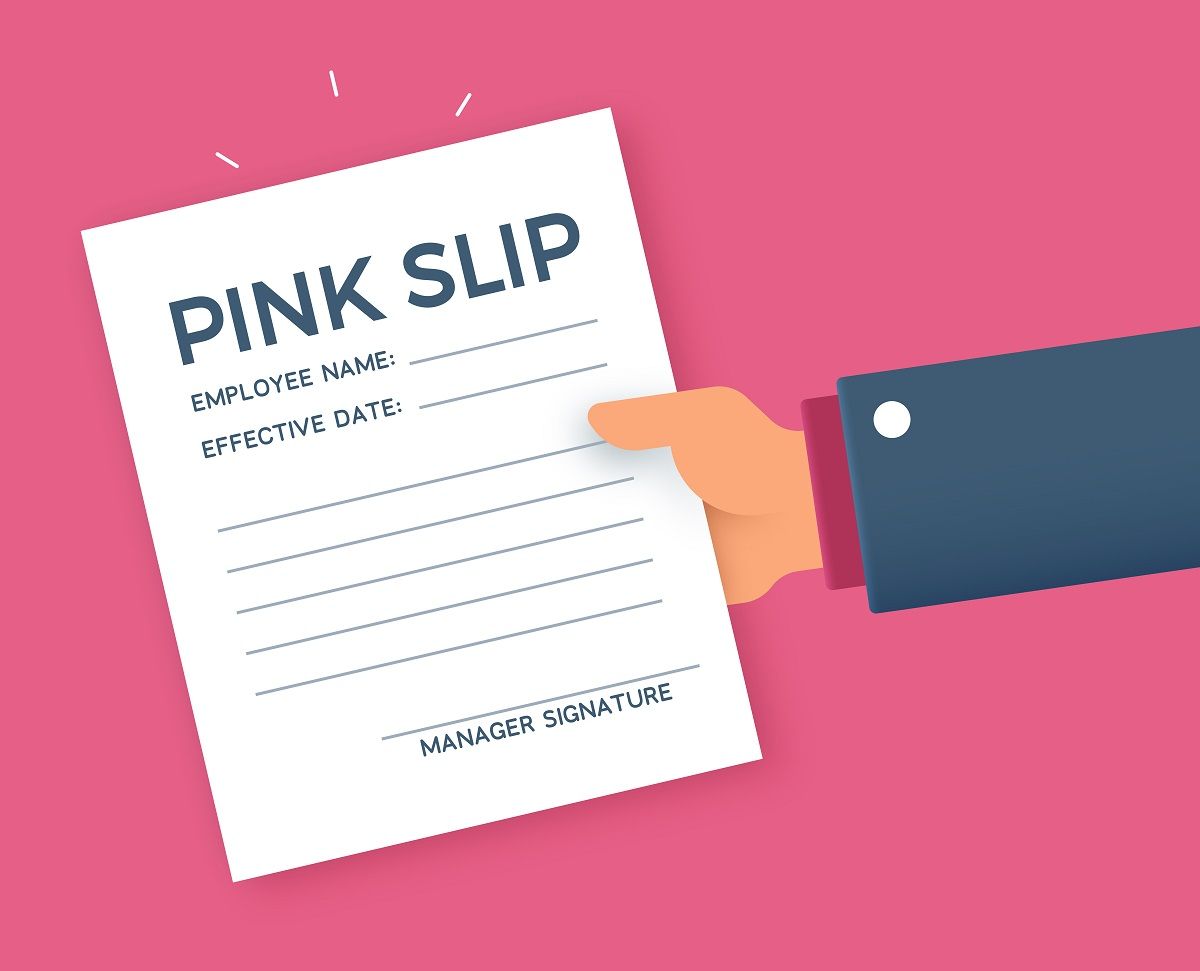Nowadays, a worker who is permanently dismissed from their job is generally said to be "terminated" or "fired," or possibly "laid off" if their dismissal was not for cause. And notice of termination is typically delivered to an employee via a face-to-face meeting with their supervisor or a human resources manager rather than in writing.
For about a century, however, American workers from all walks of life lived in fear of one day being "pink slipped" -- that is, receiving a notice printed on a pink slip of paper, usually distributed with their paycheck, informing them that their services were no longer required by their employer (that is, they were fired).
The origins of the phrase 'pink slip' remain a mystery, however. Nobody can seem to document that it was ever a common or widespread practice in the U.S. for workers who had been laid off or fired to receive notification of their dismissals via pink slips of paper. So, did the term "pink slip" really come about because long ago, a company (or companies) used to dismiss employees by distributing termination of employment notices printed on pink paper, or was the term always a symbolic rather than a literal one?
Over the years people have offered plenty of examples of companies that supposedly used pink slips to fire their employees, but none has ever been verified. The most common explanation predictably concerns the Ford Motor Company (as Henry Ford and his business are commonly viewed as the prototype that established the modern corporate employer-employee business relationship):
The "pink slip" has come a long way from when Henry Ford dreamed up a way to evaluate his assembly line employees. Each worker had a cubbyhole where at the end of the workday, a manager would place a piece of colored paper. A white piece of paper meant their work was acceptable, a pink one meant the boot.
However, this anecdote about Ford is just that, an anecdote with nothing behind it other than sheer repetition. No evidence documents that Ford ever used pink and white slips of paper to indicate evaluation of employees' job performance.
Peter Liebhold, a curator at the Smithsonian Institution's National Museum of American History in Washington, D.C., has spent years searching for an example of an actual pink slip, but even though he and his colleagues have turned up similar artifacts (such as the red twill used to bundle documents in the 19th century, a symbol we now know as bureaucratic "red tape"), the dreaded pink slip has remained elusive:
If there was a company that once used pink slips, Liebhold hasn't found it.
Over the years he's scoured scholarly journals from Business History Review to the obscure Trained Men for clues. He's quizzed human resources staffers at companies such as Merrill Lynch and labor scholars in online discussion groups.
The Oxford English Dictionary's oldest citation for the term "pink slip" comes from a 1904 article published in a typographical journal, with the usage suggesting that a pink slip was not itself a notice of termination, but rather a warning issued in that industry when an employee did not perform his job adequately -- the accumulation of too many "pink slips" could therefore result in one's dismissal from employment:
A revise proof to correct is regarded as a cardinal sin, for a 'pink slip' is charged up against the delinquent, and a certain number of these means discharge.
But if no company ever really used pink slips before "pink slip" entered the language, then where did the term come from?
Other languages have also used terms for dismissals related to colorful paperwork: Germans would "get the blue letter" ("den blauen Brief bekommen"), and the French military dismissed personnel with a "yellow paper" ("cartouche jaune"). But perhaps the "pink slip" doesn't have anything to do with color at all.
Consider that we often use terms relating to injury or violence to describe the severing of a relationship (e.g., a fired employee has "gotten the axe," a player who doesn't make the team is said to have been "cut"), and that when used as a verb, "pink" means "to pierce" or "to stab" (hence the item known as "pinking shears") or "to wound by criticism or ridicule." Perhaps "pink slip" is related more to the symbolic notion of being stabbed in the heart than to actual colored pieces of paper.
Curiously, the term "pink slip" was also formerly synonymous with the concept of automobile ownership, as "having the pink slip" meant that you possessed a vehicle's certificate of title and thus owned it free and clear. In this case, the phrase arose because automotive titles really were issued on pink slips of paper, but not everywhere -- the practice was most common in California, and the influence of that car-crazy state was enough to make the term common parlance across the U.S.

